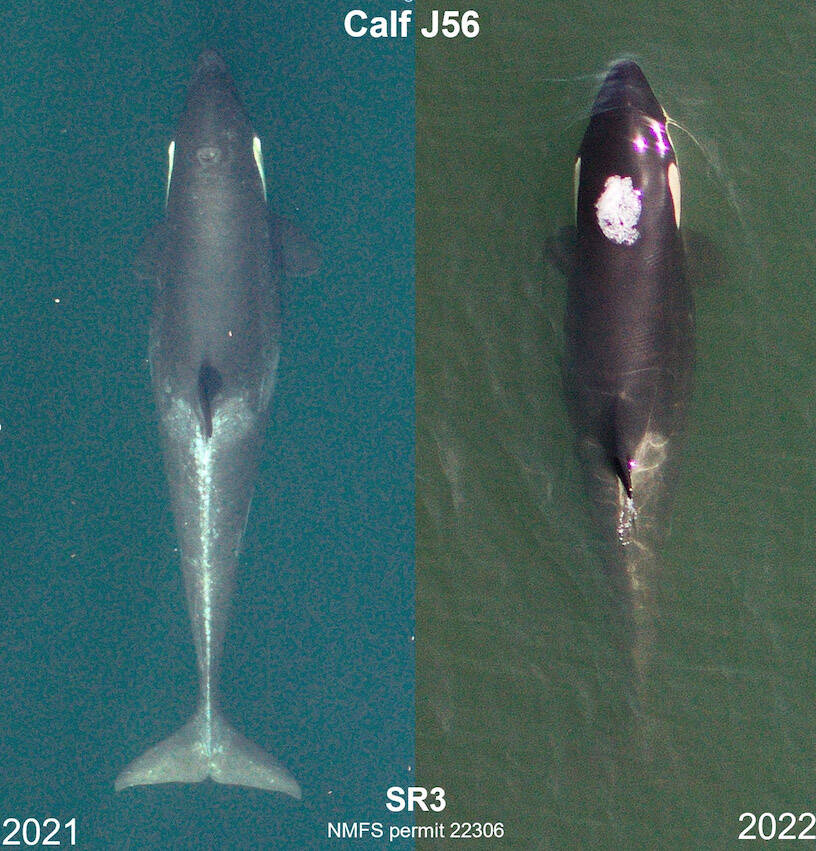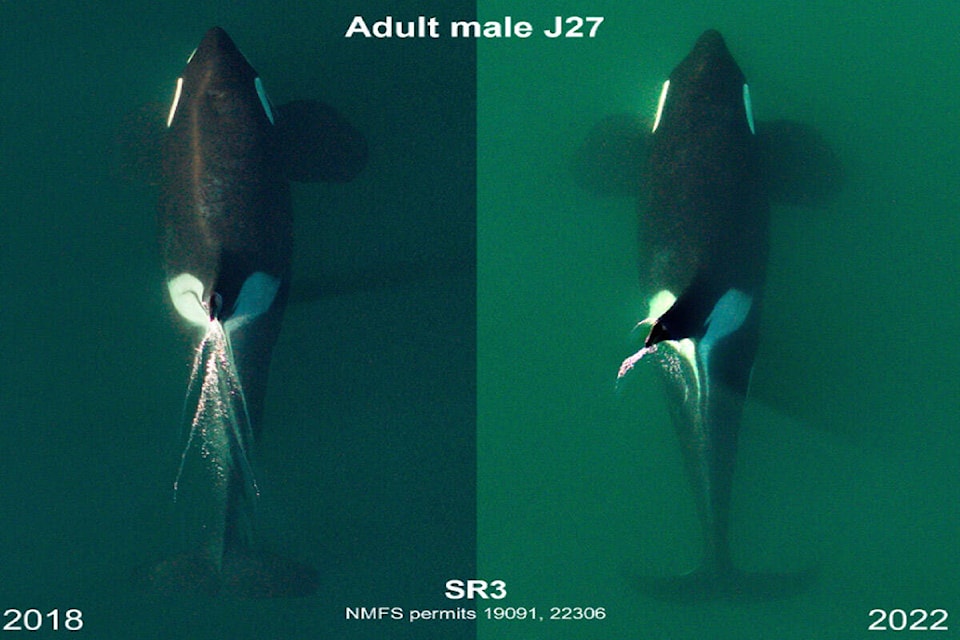Washington’s Department of Fish and Wildlife has imposed increased summer restrictions in response to 12 southern resident killer whales (SRKW) being designated as vulnerable.
SR3 Sealife Response, Rehabilitation, and Research used measurements and drone images to identify several SRKW pregnancies and a dozen whales in poor condition between Sept. 2021 and April.
The findings prompted Washington’s Department of Fish and Wildlife to issue an emergency order on June 30 requiring commercial whale-watching vessels to keep at least one-half nautical mile away from endangered southern resident killer whales and their travelling companions from now through September.
The SR3 researchers determined the J- and L-pod members were in poor condition after measuring the fatness behind their skulls. That found the whales to be at a two to three times higher risk of mortality. One of the L-pod members also appeared to be pregnant when it was last measured in January.
“Our non-invasive photogrammetry research can identify whales in poor health that have a higher risk of death in the subsequent months, and our aim is to identify these vulnerable whales before their condition becomes terminal,” said Holly Fearnbach, marine mammal research director with SR3, in a release. “Similarly, we can identify females in the latter stages of pregnancy, which is an important but fragile time for successful reproduction.”
READ:
The measurements also found three K-pod whales were in their last nine months – and likely their final six months – of their year-and-a-half-long pregnancies as of September 2021. Videos of a calf with K-pod means at least one of those pregnancies was successful and researchers expect an L-pod member to now be in the late stage of pregnancy.
A census done late last year found the SRKW population sat at 73 individuals.
“While we have reason to remain hopeful with the reports of recent pregnancies, the reality is that there are several southern residents that aren’t doing well and we’re very concerned about the population at large,” said Department of Fish and Wildlife director Kelly Susewind.
Aside from the pregnancies and whales in poor condition, two other young southern residents were found to be growing slower than expected.
All boaters are also encouraged to follow the increased restrictions around the vulnerable mammals.
Erin Gless, executive director with the Pacific Whale Watch Association, said operators will work closely with Washington state wildlife officers to communicate sightings while giving the whales plenty of space.
“Whale-watching operators are often the first to spot and identify southern residents when they’re present in the Salish Sea.”
READ:

Do you have a story tip? Email: vnc.editorial@blackpress.ca.
Follow us on and and like us on




